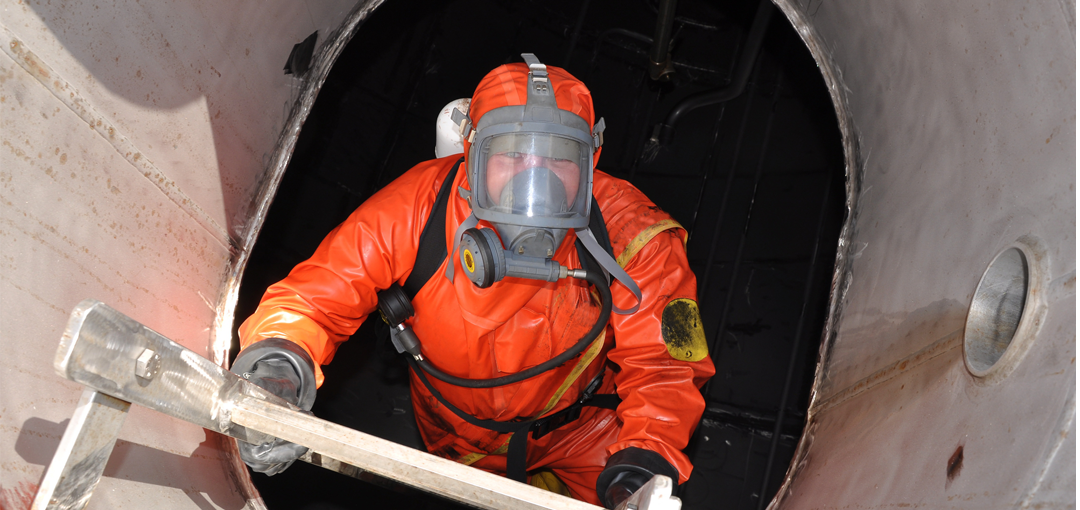Confined Space Risk Assessment: What You Need To Know
Confined Space Risk Assessment: What You Need To Know
November 8, 2023 |
Confined spaces can be deceptive in their apparent tranquility, hiding potential dangers that demand meticulous assessment and management. Whether you’re a safety professional, a worker, or an employer, understanding confined space risk assessment is crucial for safeguarding lives and ensuring compliance with safety regulations.
Defining Confined Spaces
Before diving into the intricacies of risk assessment, let’s clarify what confined spaces are. These are areas with limited entry and exit points, not designed for continuous human occupancy. Examples include tanks, tunnels, silos, and sewers. The deceptive calm within these spaces can mask a variety of hazards, making them hazardous work environments.
Why Is Confined Space Risk Assessment Vital?
Confined space incidents can result in catastrophic consequences, including injuries, fatalities, and long-lasting environmental damage. To prevent these outcomes, a comprehensive risk assessment is essential. Here’s why it matters:
Identifying Potential Hazards
Risk assessment begins with recognizing potential hazards within a confined space. These hazards may include toxic gases, low oxygen levels, flammable materials, or physical obstacles. By identifying these risks, you can develop strategies to mitigate them effectively.
Compliance With Regulations
Various safety regulations and standards, such as OSHA (Occupational Safety and Health Administration) standards in the United States, mandate confined space risk assessment for certain workplaces. Failure to comply with these regulations can lead to severe penalties and legal consequences.
Protecting Workers
The primary goal of risk assessment is to protect the well-being of workers. Confined spaces pose inherent risks, and by assessing them thoroughly, you can create a safer work environment and reduce the likelihood of accidents.
Key Steps In Confined Space Risk Assessment
Now that we’ve established the importance of confined space risk assessment, let’s delve into the essential steps to conduct an effective assessment:
- Identification of Confined Spaces – The first step is identifying confined spaces within your workplace. Create a comprehensive list, ensuring that all potential confined spaces are accounted for. This step is vital for managing risks effectively.
- Hazard Identification – Once confined spaces are identified, the next crucial step is to assess and identify potential hazards within them. This may include evaluating the presence of hazardous gases, determining oxygen levels, checking for flammable substances, and identifying physical hazards like confined spaces with limited entry points.
- Risk Assessment – With hazard identification in place, it’s time to assess the level of risk associated with each identified hazard. Assign a risk level, considering factors such as the likelihood of the hazard occurring and the potential severity of its consequences.
- Control Measures – Based on the risk assessment, implement control measures to mitigate the identified hazards. These measures may include stand-by rescue teams, proper ventilation, personal protective equipment (PPE), safety procedures, and employee training.
- Entry Permit Systems – Implementing an entry permit system is crucial. Only authorized personnel should enter confined spaces, and they should do so following a strict protocol that includes safety checks, communication procedures, and emergency response plans.
- Continuous Monitoring – Risk assessment is not a one-time task. It should be an ongoing process. Regularly monitor confined spaces for changes in conditions or new hazards that may emerge over time.
Effective Communication And Training
In addition to the technical aspects of risk assessment, effective communication and safety training are essential. Ensure that all workers are well-informed about the risks associated with confined spaces and the safety protocols in place. This can significantly reduce the likelihood of accidents.
In the realm of workplace safety, confined space risk assessment stands as an indispensable cornerstone. Its significance cannot be overstated, for it is the sentinel that guards against the silent dangers lurking within confined spaces. The deceptive tranquility of these areas can mask a plethora of perils, making meticulous risk assessment an absolute imperative.
By committing to this process, we embark on a journey to ensure not only compliance with stringent safety regulations but, more importantly, the preservation of human lives. Confined spaces, by their very nature, harbor latent risks that demand vigilance and expertise.
The steps outlined—identification, hazard assessment, risk evaluation, control measures, entry permits, and continuous monitoring—constitute the scaffold upon which safety is built. Through rigorous risk assessment, we recognize, confront, and mitigate hazards before they transform into calamitous events.
Yet, safety extends beyond mere protocols and checklists. Effective communication and training breathe life into these procedures. Equipping workers with the knowledge and awareness of confined space risks empowers them to be the architects of their safety.
In the grand symphony of workplace safety, confined space risk assessment is the conductor, orchestrating harmony amid the cacophony of potential threats. It is the guardian of lives, the shield against adversity, and the promise of a safer tomorrow. So, let us embrace this vital process, not as a burden but as a sacred duty—to protect, to preserve, and to ensure that confined spaces cease to be perilous enigmas and become sanctuaries of security.
